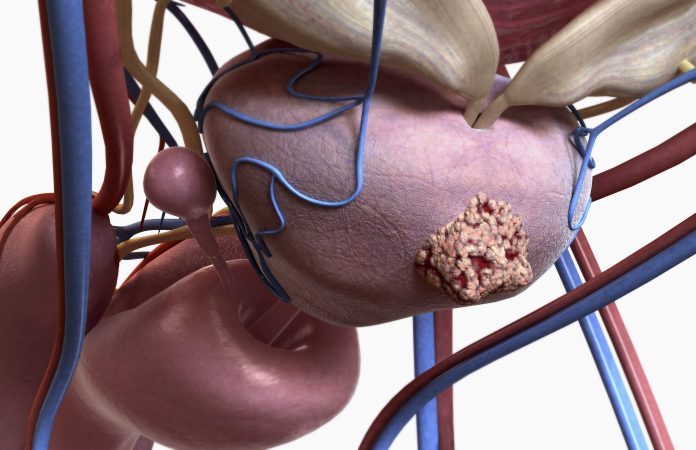
Huntsman Cancer Institute researchers have shown that less than a third of patients with metastatic prostate cancer or advanced urothelial carcinoma undergo next-generation sequencing (NGS), even though these tumors may have mutations that could be used to guide treatment.
The NGS rates have increased over time, but were lower among Black patients, Hispanic or Latino patients, individuals with low socioeconomic status, and those with Medicaid, reported Chadi Hage Chehade, MD, a post-doctoral research fellow at the Huntsman Cancer Institute at the University of Utah, and co-authors in JAMA Network Open.
“The rates of NGS testing in our findings are unacceptably low [and] underscore the need to improve access to quality health care, especially in the era of precision oncology,” Hage Chehade told Inside Precision Medicine.
He explained that the availability of life-prolonging targeted therapies means that NGS is recommended for all patients with metastatic prostate cancer and advanced urothelial carcinoma who are not candidates for curative treatment.
For example, patients with prostate cancer harboring BRCA or other homologous recombination repair alterations can receive the combination of a poly(ADP) ribose polymerase inhibitor with an androgen receptor pathway inhibitor such as olaparib plus abiraterone, while patients with urothelial carcinoma harboring alterations in the FGFR3 gene can be treated with erdafitinib, a tyrosine kinase inhibitor.
The study, which was led Umang Swami also from the Huntsman Cancer Institute, used electronic health record data to identify 11,927 patients diagnosed with metastatic prostate cancer and 6490 patients diagnosed with advanced urothelial carcinoma between 2015 and December 2022.
Of these, just 29.3% with metastatic prostate cancer and 32.0% with advanced urothelial carcinoma received NGS testing. The median time from metastatic or advanced disease diagnosis to testing was 13.2 months in the prostate cancer cohort and 2.7 months in the urothelial carcinoma cohort.
In the metastatic prostate cancer cohort, the rates of NGS steadily increased from 19.0% in 2015 to 36.1% in 2020 before decreasing to 27.1% in 2022.
The researchers also looked for disparities in NGS testing and found that Hispanic or Latino patients with metastatic prostate cancer were 30% less likely than their White counterparts to undergo NGS, while Black patients were 25% less likely to receive the test than White participants.
Having a low socioeconomic status (SES) was also associated with a reduced chance of NGS testing, with individuals in the bottom two SES quartiles 26% and 11% less likely to be tested than those in the top quartile. Similarly, people with Medicaid were 47% less likely, and those with Medicare 11% less likely, to be tested than individuals with a commercial health plan.
In the advanced urothelial carcinoma cohort, the NGS rate increased from 14.1% in 2015 to 48.9% in 2021 before decreasing slightly to 46.6% in 2022.
Again, there were disparities by race and socioeconomic status. In this case, Black patients with advanced urothelial carcinoma were 24% less likely that White patients to receive NGS, while those in the lowest two SES quartiles were 23% and 13% less likely to be tested, respectively, than people in the highest quartile. Participants with Medicaid or Medicare were 28% and 12% less likely to undergo NGS testing, respectively, than those with a commercial health plan.
Hage Chehade said that implementing NGS into the standard of care management of all patients with metastatic prostate cancer and advanced urothelial carcinoma could help boost testing rates overall.
“This can be achieved by enhancing awareness among patients and healthcare providers regarding the benefits of NGS testing, including optimizing treatment selection based on the availability of life-prolonging alteration-targeting drugs, improving prognostication and counseling in the clinic, and facilitating enrollment in clinical trials,” he said. “Removing barriers that prevent NGS testing, such as cost and access issues, with solutions such as mobile phlebotomy services and adopting insurance policies that reduce co-pays and remove the need for NGS testing prior-authorization could help.”
Hage Chehade also noted that healthcare policies as well as patient-centered and provider-centered initiatives are essential to improving NGS testing rates in underrepresented populations.
He said he hopes the study will raise awareness among clinicians regarding the importance of timely NGS testing. “Waiting for disease progression after initial lines of therapies may lead to (1) deterioration of quantity or quality of previously biopsied tumor tissue available for NGS testing, especially in prostate cancer, or (2) losing the crucial window of therapy initiation while awaiting the results of NGS testing which may be compounded by the time needed to get repeat biopsy, locate old tumor tissue or to obtain insurance approval for targeted therapies in a timely fashion, especially in those with rapid disease progression.”












